Table of Contents
- Introduction
- What is the minimum turnover for GST registration?
- GST Threshold: Then vs Now
- When the GST limit doesn’t apply
- How to calculate your GST turnover
- What documents do you need for GST registration?
- GST Rates in India
- Why GST registration matters (and what can go wrong)
- What’s changed in 2025 (and why you can’t ignore it)
- Conclusion
Most small businesses don’t think about GST registration until they realise they’ve crossed the turnover limit—and by then, it’s often too late. The law is clear: once your sales cross a certain threshold, registration under GST isn’t optional.
But what exactly is that limit? Does it change depending on what you sell or where you’re based? And what happens if you miss it?
In this blog, we’ll walk through the GST registration threshold in plain terms. Whether you’re running a retail shop, a service consultancy, or an online business, knowing the current limits—and the consequences of ignoring them—can save you from penalties and missed opportunities.
What is the minimum turnover for GST registration?
If you’re selling goods and your total sales in a year cross ₹40 lakh, you need to get a GST number. For services, the limit is ₹20 lakh. That’s how it works in most states.
Some states have lower limits. In places like Manipur, Meghalaya, or Mizoram, it’s ₹20 lakh for goods and ₹10 lakh for services.
But here’s the thing: even if you’re under the limit, it doesn’t hurt to register. You can claim input tax credit, and a lot of buyers—especially the bigger ones—won’t deal with you unless you have a GST number. If you’re selling online, it’s pretty much a must.
So don’t just go by the limit. Look at where your business is headed.
GST Threshold: Then vs Now
Before 2019, the GST registration limits were the same across the board—₹20 lakh for goods and services, and ₹10 lakh in a few smaller states. That’s it.
But after small business owners pushed back, the GST Council changed the rules. From April 2019, the threshold was raised—but only for goods. The limit for services stayed the same.
Here’s how it looks now:
| Type of Supply | Earlier Limit | Current Limit (Most States) | Special Category States |
| Sale of goods & services (combined) | ₹20 lakh | — | ₹10 lakh |
| Sale of goods only | ₹20 lakh | ₹40 lakh | ₹20 lakh |
| Sale of services only | ₹20 lakh | ₹20 lakh | ₹10 lakh |
The higher limit for goods applies only if you sell within your own state and not through an eCommerce platform. If you sell online or supply across state lines, GST registration is still compulsory—no matter your turnover.
When the GST limit doesn’t apply
In some cases, the ₹40 lakh or ₹20 lakh rule doesn’t mean much. You’ll need to register even if you haven’t hit that number.
If your business is in a smaller state—like Nagaland, Manipur, or Mizoram—the limit is lower. ₹20 lakh for goods. ₹10 lakh for services.
If you sell through Amazon, Flipkart, or any online platform, GST is compulsory. Same if you sell to another state. Doesn’t matter if your turnover is ₹5 lakh or ₹50 lakh—you still need to register.
Exports count too. If you’re shipping products outside India, GST registration is a must.
But if you deal in goods or services that aren’t taxable under GST, you don’t need to register at all. Like unprocessed food grains, or basic healthcare.
So don’t just look at your sales total. Look at where you’re selling, and how.
How to calculate your GST turnover
When people hear “turnover,” they often think it’s just their sales. It’s not. For GST, it means a few things added together.
You start with the total value of everything you’ve sold in a year. That includes goods, services, and even exempt supplies.
If you have more than one business with the same PAN, the turnover from all of them is counted together. Doesn’t matter if they’re in different states or deal in different things—it all adds up.
Exports are included too. So are interstate sales.
Here’s a rough idea:
GST Aggregate Turnover = Taxable sales + Exempt sales + Exports + Interstate sales (all businesses under the same PAN)
If the final number crosses the limit for your state and business type, you need to register.
Don’t guess—check it properly. One misstep here, and you’re looking at penalties.
What documents do you need for GST registration?
The paperwork isn’t complicated, but you’ll need to keep a few things ready. It depends a bit on what kind of business you run—proprietorship, partnership, company—but most of it is standard.
Here’s what you’ll need:
- Photo of the owner (or all partners/directors, if it’s not a one-person firm)
- PAN card and Aadhaar card
- Mobile number and email ID (you’ll get OTPs for verification)
- Business address proof — like a rent agreement, electricity bill, or property papers
- Bank account details — cancelled cheque or bank statement
- Any legal papers tied to your business: partnership deed, incorporation certificate, shop act license, etc.
That’s it. Upload them on the GST portal and keep copies handy—you’ll need them if the department asks for verification later.
GST Rates in India
GST doesn’t have one flat rate. It depends on what you’re selling.
There are slabs—5%, 12%, 18%, and 28%. Some items have 0%, and a few odd ones are at 0.25% or 3%.
Here’s a quick idea:
- 0% – Basic food like milk, salt, unbranded atta, and services like school education or healthcare
- 5% – Tea, sugar, spices, life-saving medicines, coir products
- 12% – Ghee, mobile phones, processed food
- 18% – Soap, hair oil, packaged food, capital goods
- 28% – ACs, fridges, cars, luxury items
If you’re not sure which rate applies to your product or service, check the official list on the GST portal or talk to your accountant. Getting this wrong can mess up your billing—and your returns.
Why GST registration matters (and what can go wrong)
A lot of small businesses skip GST registration, thinking they’ll deal with it later. But the moment your turnover crosses the limit and you’re not registered, you’re already in violation. The penalty? 10% of the tax due or ₹10,000—whichever is higher. And that’s just the start.
You also lose out on input tax credit. That means you’re paying more on purchases and can’t claim it back. Over time, that adds up.
Another problem? Bigger buyers and corporates usually won’t work with unregistered vendors. You’ll miss out on tenders, bulk orders, and e-commerce sales.
Yes, GST compliance takes effort—filing returns, keeping invoices in order, watching credit notes. It’s paperwork. But it’s part of running a serious business.
The government isn’t slowing down either. More checks, tighter rules, and e-invoicing are already here for medium businesses. MSMEs will be next.
If you’re on the fence, get ahead of the curve. It’s better to be ready than to be fined.
What’s changed in 2025 (and why you can’t ignore it)
The turnover limits haven’t moved since 2019. Still ₹40 lakh for goods, ₹20 lakh for services. But the rules around how you stay compliant have changed—and quietly, too. Here’s what’s happening this year that could trip you up.
1. You need MFA to even log in
Now, you can’t file a return or download anything from the GST portal without multi-factor login. One password isn’t enough. You’ll need OTPs through apps like NIC-GST or Sandes. No OTP, no access.
2. E-invoice uploads have a time limit
If your turnover is over ₹10 crore, you only get 30 days to upload your e-invoices. Miss the window, and the portal won’t accept them. That also means no input tax credit for your buyers. You lose their trust, and you might lose their business.
3. Old invoices won’t work for e-way bills
As of this year, the invoice you use for an e-way bill can’t be more than 180 days old. If your shipment gets delayed or you try to reuse an old bill, the system will reject it. There’s no workaround.
4. Businesses in more than one state need ISD
If you have branches in different states under the same PAN, you now need an Input Service Distributor registration to share credits properly. No more adjusting between branches casually.
Why this matters
Even if your turnover is ₹18 lakh or ₹38 lakh, you’re not off the hook. The system is getting stricter at every level—not just who registers, but how you manage once you’re in.
What to do now
- Set up MFA now. Don’t wait till you’re locked out.
- Upload e-invoices as soon as they’re made. Don’t hold them.
- Check the date on your invoices before generating e-way bills.
- Talk to your accountant if you’re running across state lines.
Conclusion
If you think GST doesn’t apply to you, double-check. The limits are clear. Once you cross them, you’re expected to register. No warning, no reminder.
Don’t wait for a problem. If your sales are going up, or if you’re selling online or to other states, get your GST number. It keeps things clean. You’ll avoid fines. You can claim tax credit. You can deal with bigger buyers.
And if you’re under the limit? Still a good idea to understand the rules now. It’s harder to fix things later.
Talk to your accountant. Look at your numbers. Do what’s needed before it becomes urgent.
Empowering MSMEs to grow smarter
Tata nexarc delivers powerful solutions for MSMEs—discover tenders, logistics solutions, and streamline procurement. Everything your business needs, all in one place.
FAQs
Can I register for GST with a residential address?
Is GST registration needed for freelancers?
What happens if I cross the limit mid-year?
Can I cancel my GST registration if my sales drop?
Is GST mandatory for selling on Instagram or WhatsApp?
Do I need separate GST numbers for different states?
Can I file GST returns myself without a CA?
Will I get a GST number immediately after applying?
Do I need to issue invoices with GST even if I’m under the limit?
What is aggregate turnover and how is it tracked?
Sohini is a seasoned content writer with 12 years’ experience in developing marketing and business content across multiple formats. At Tata nexarc, she leverages her skills in crafting curated content on the Indian MSME sector, steel procurement, and logistics. In her personal time, she enjoys reading fiction and being up-to-date on trends in digital marketing and the Indian business ecosystem.
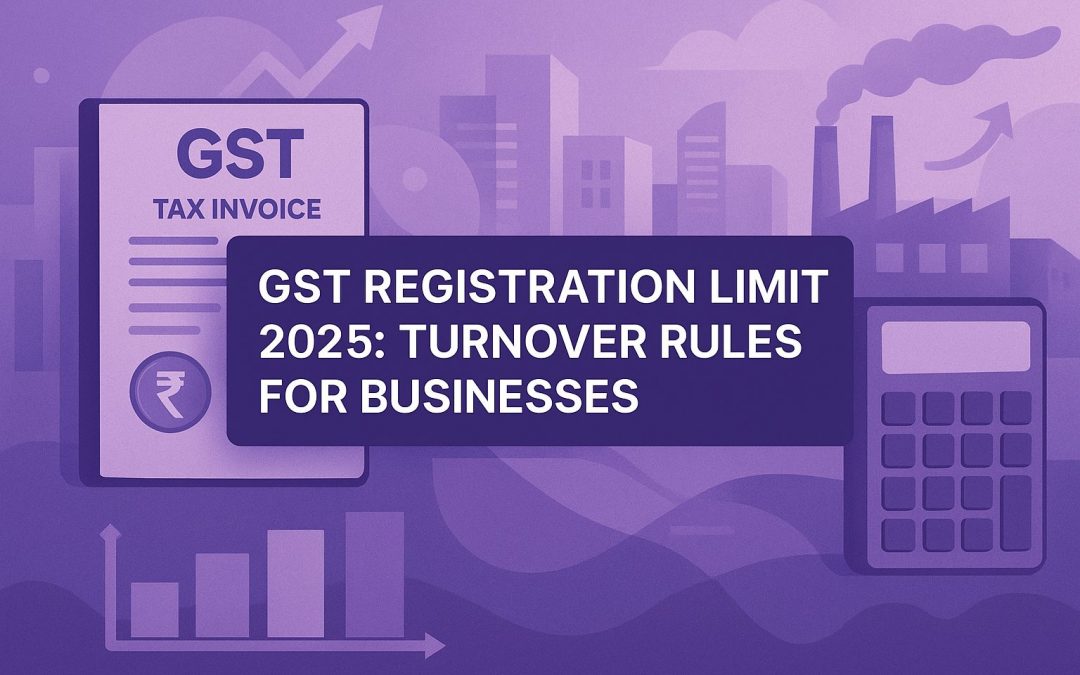

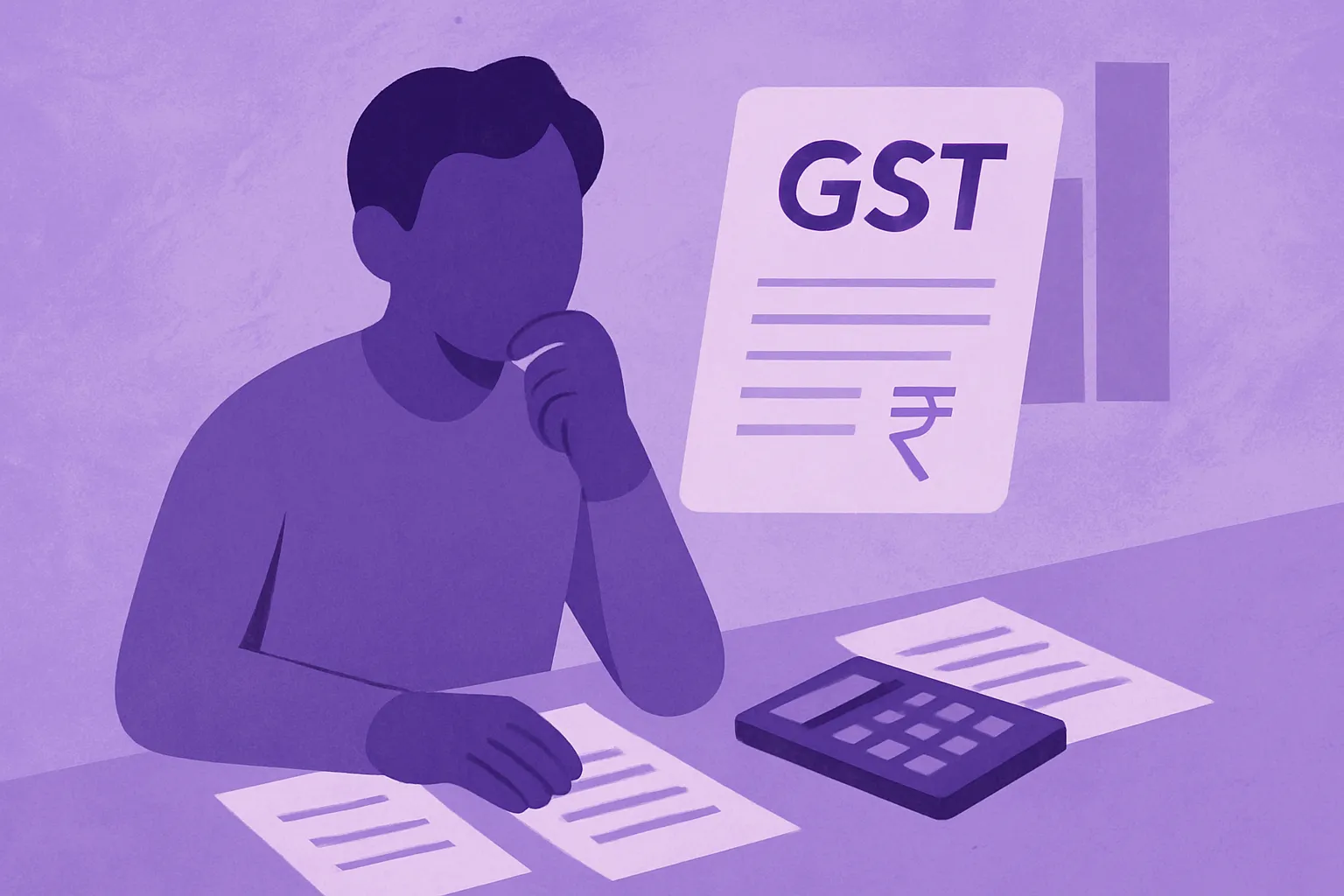
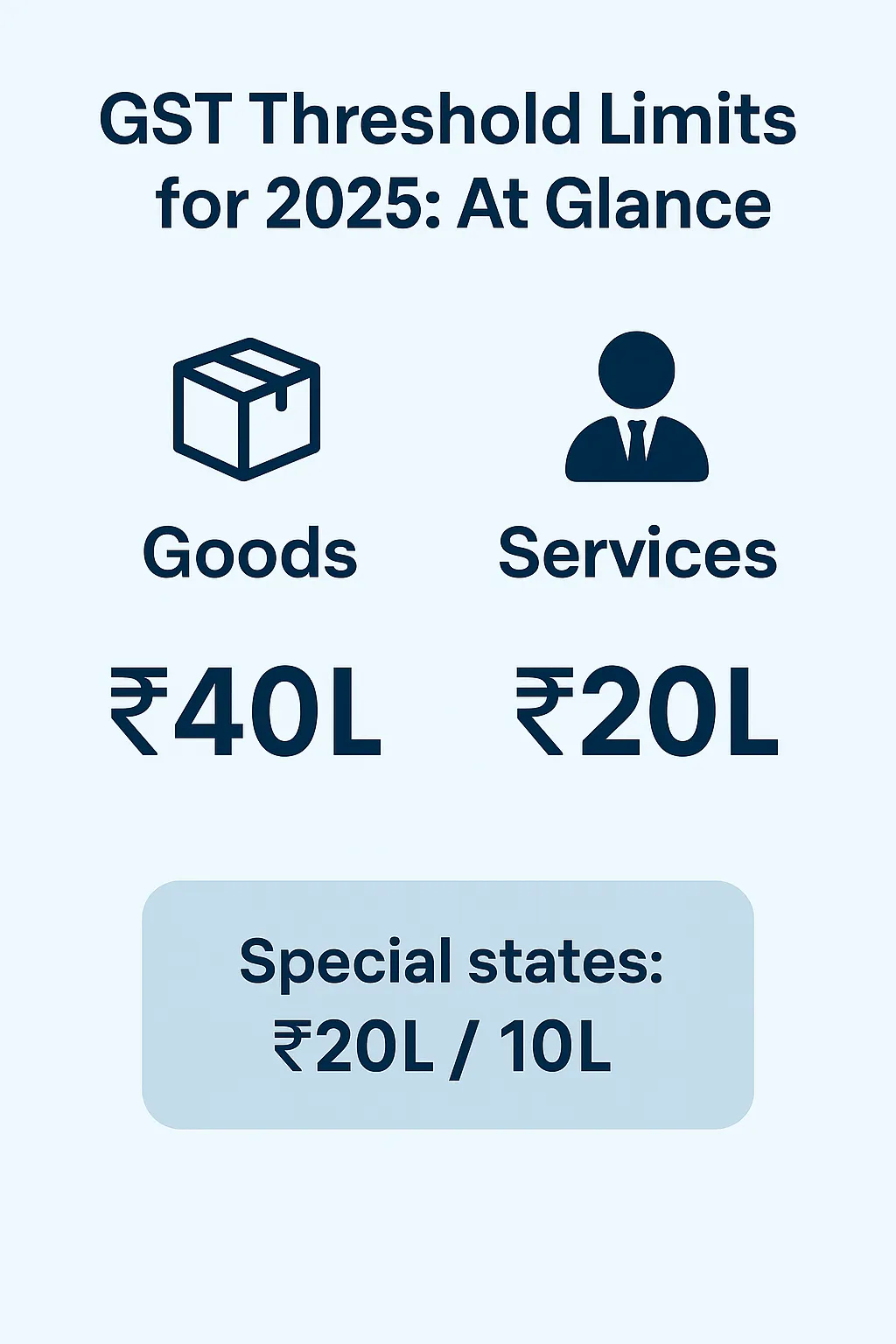
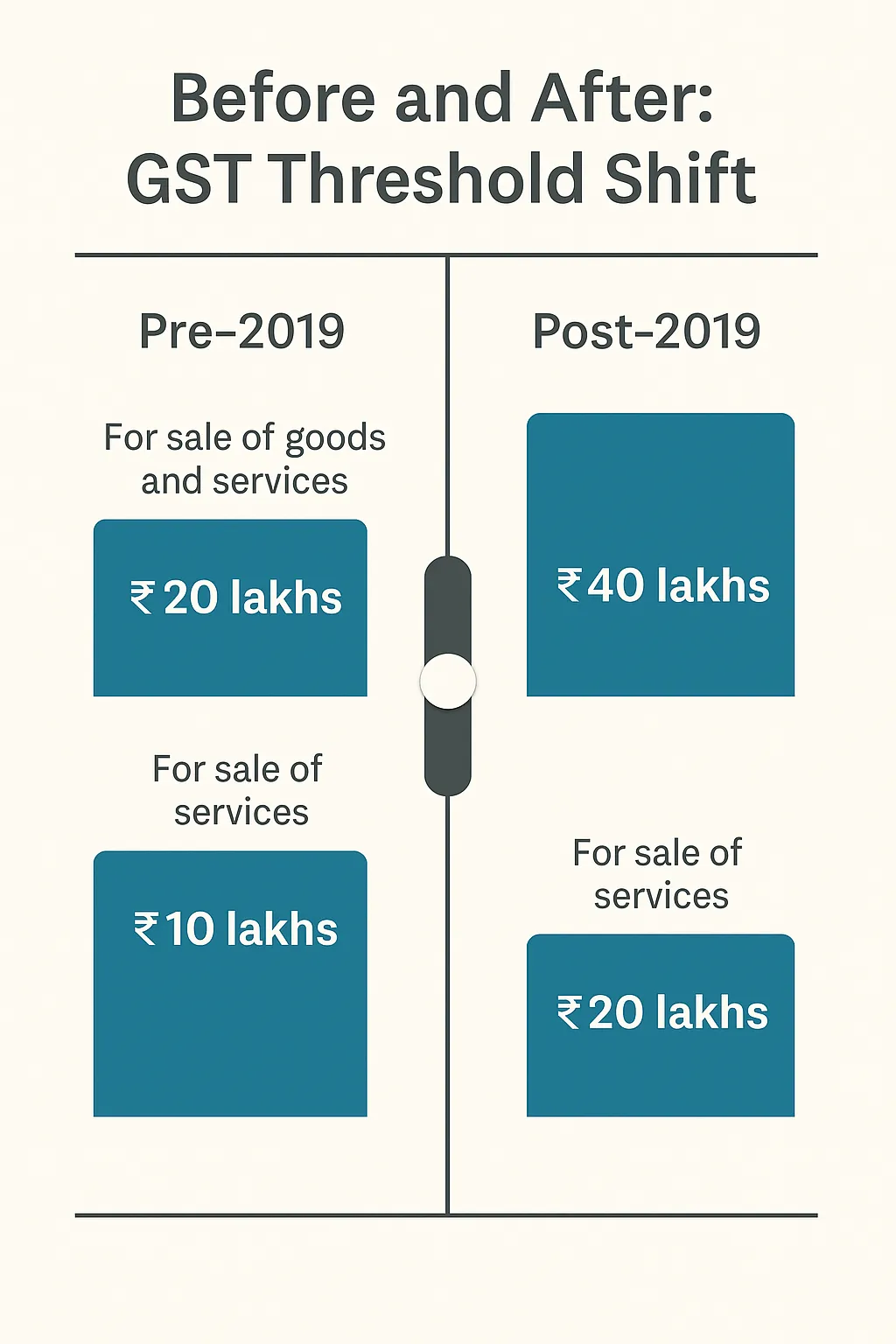
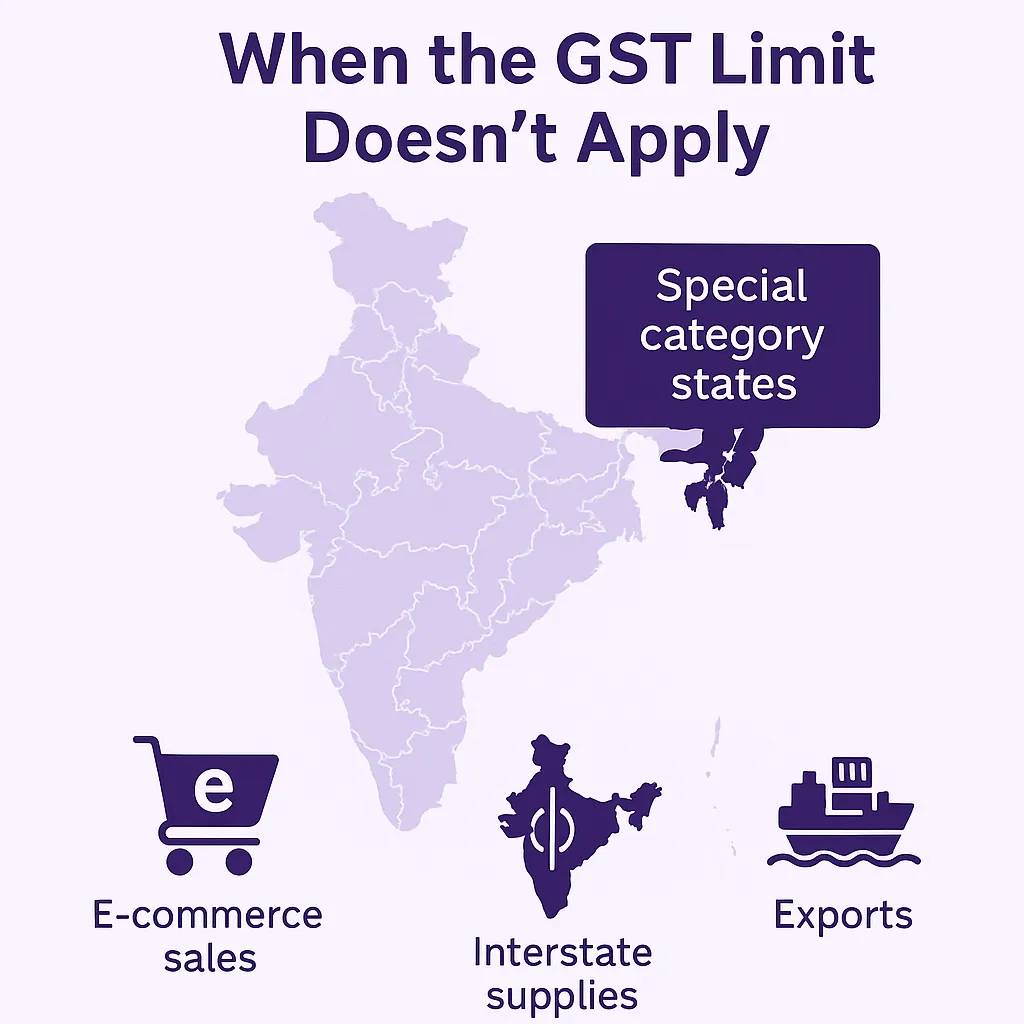
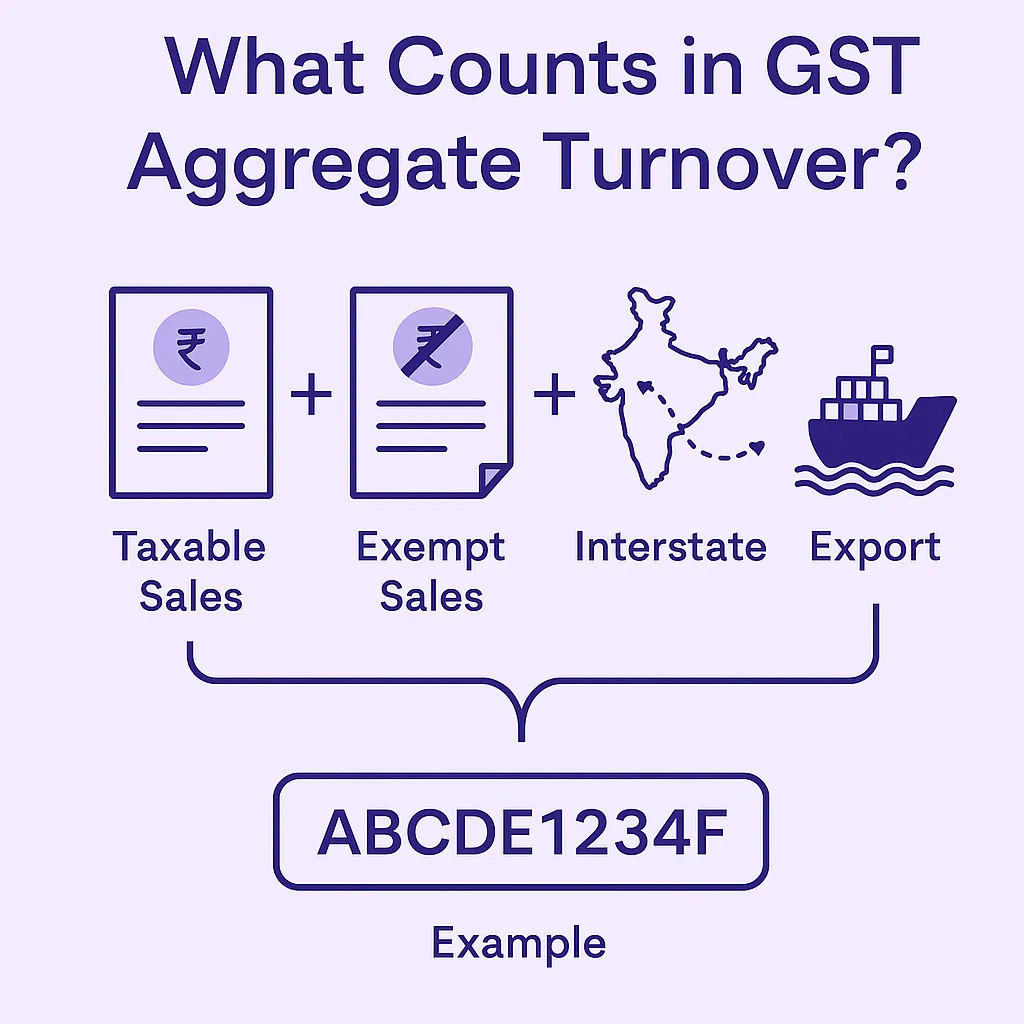
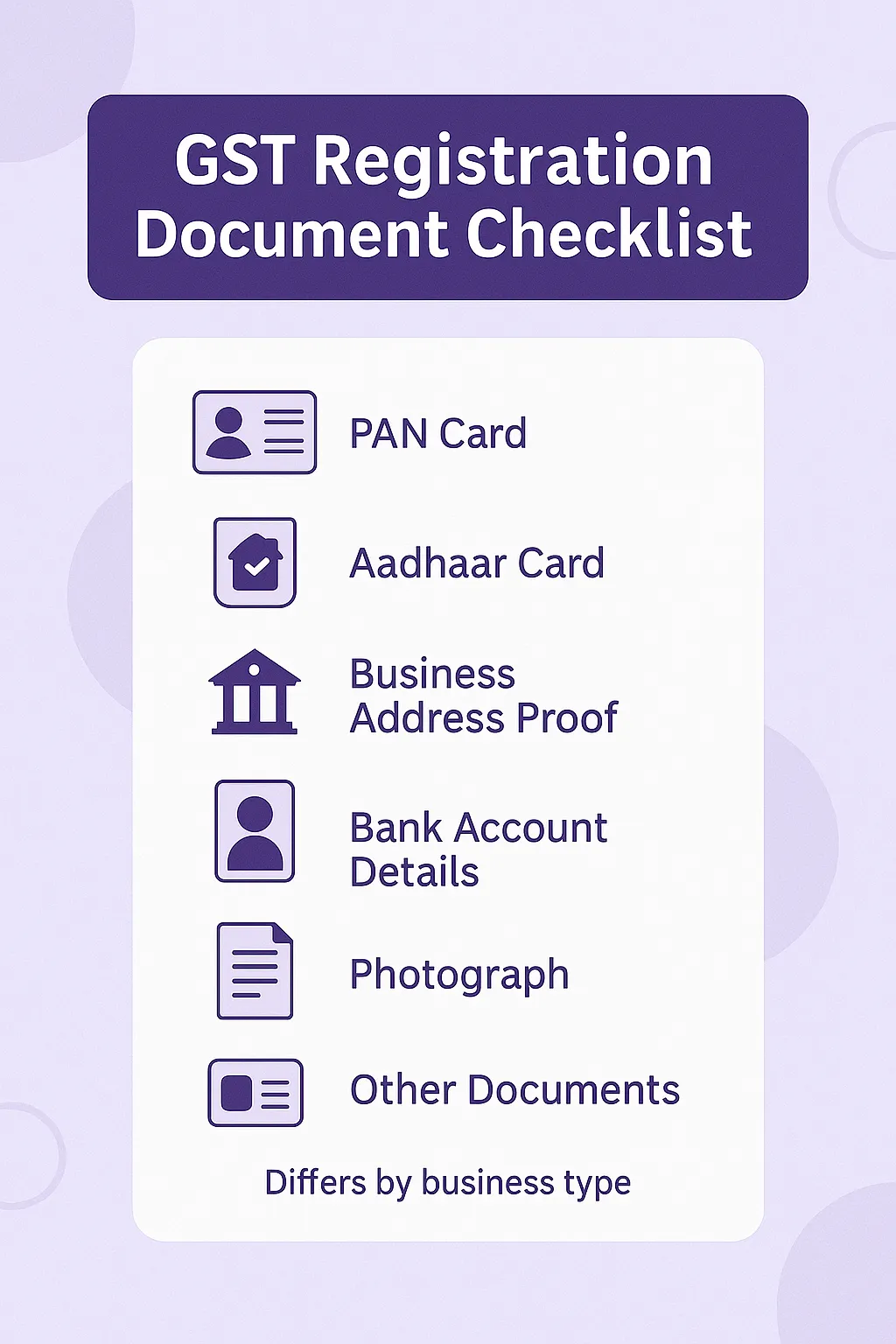
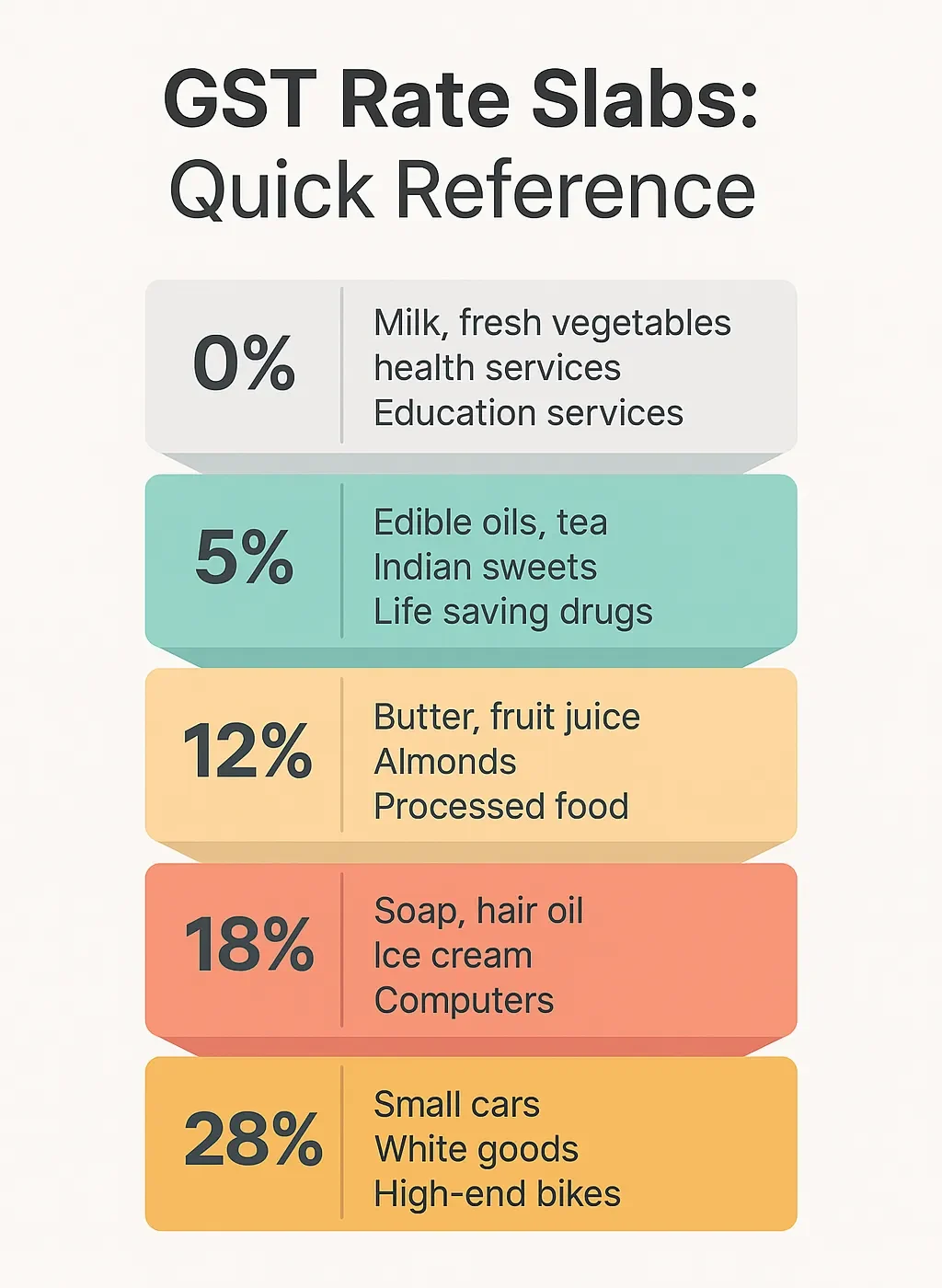
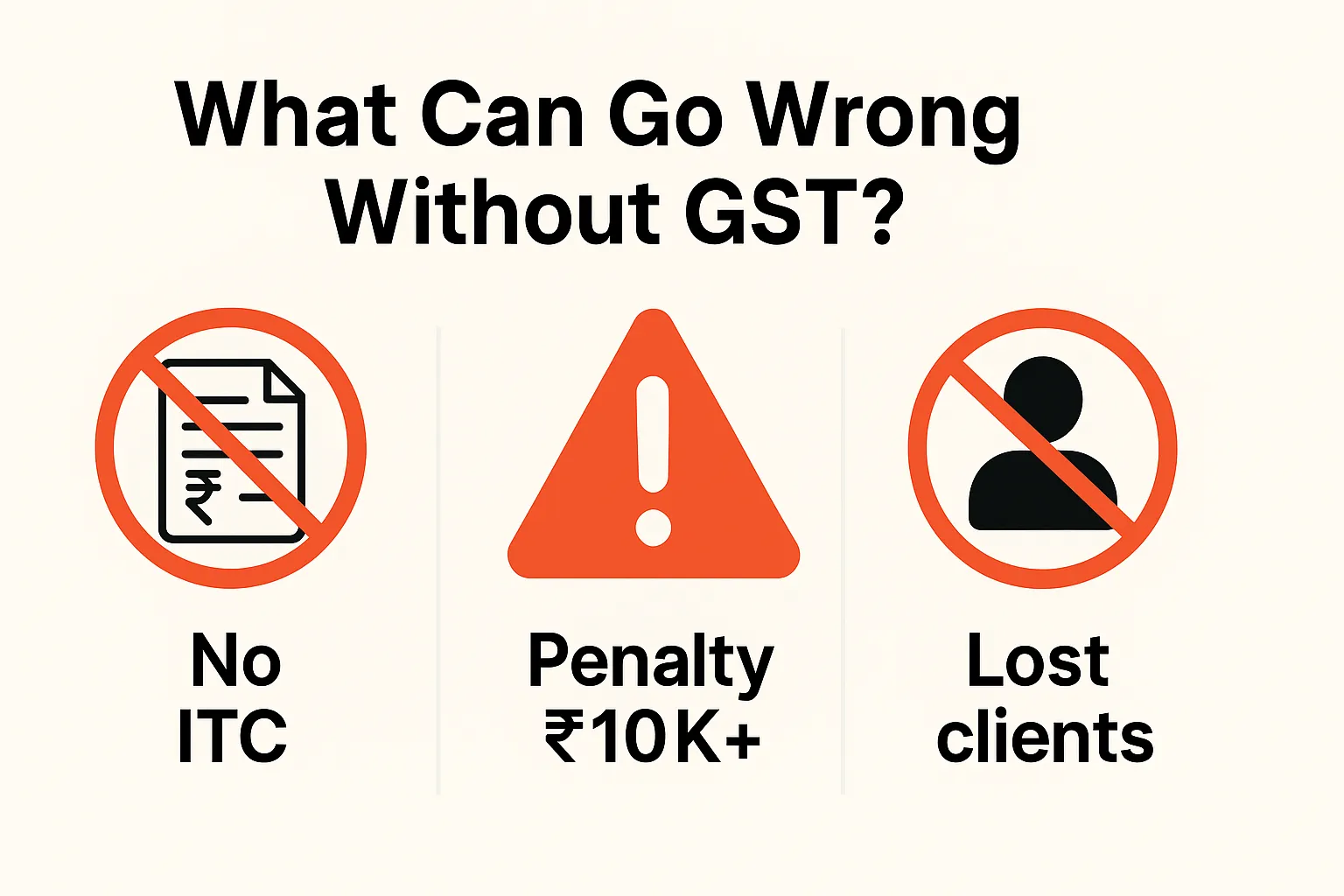




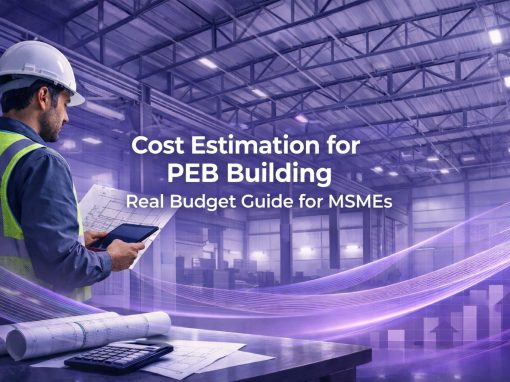

The instructions on how to calculate the turnover limit were super clear. I did the math, and it looks like I’ll be crossing the threshold next year, so I’ll start preparing for registration
Due to having my turnover just below 20 lakhs, I didn’t get my business registered under GST scheme. But looking at the compliancy and ITC benefits that GST registration provides, I guess I’m going to register anyway. Thanks for such an informative blog.
I have a small business in Delhi whose turnover is just below 22 lakhs. Some years it has gone above the limit. Should I register under GST or not? My accountant is also suggesting and forcing me to do that.
The ₹20 lakh, ₹40 lakh, and ₹75 lakh thresholds depending on the state and sector. The uncertainty around when GST comes into play for smaller units has been confusing, and you’ve done an excellent job of explaining who is required to register and when.